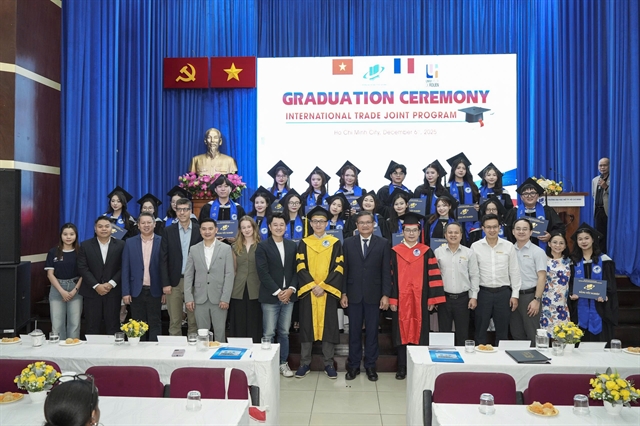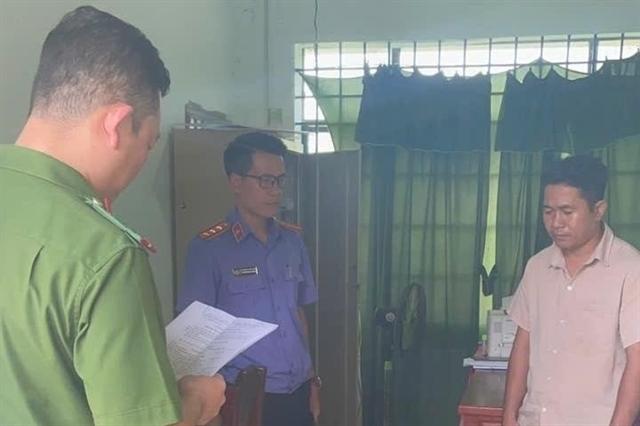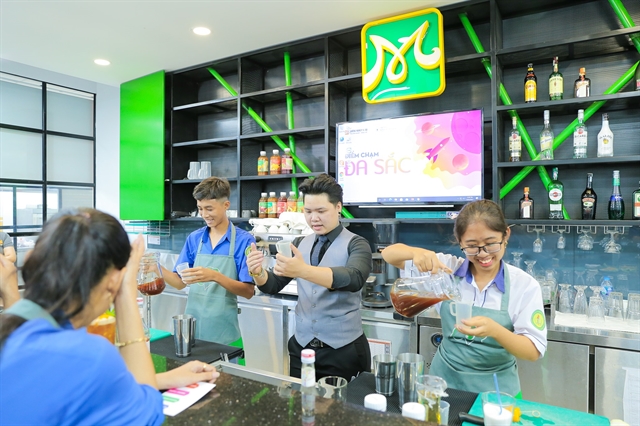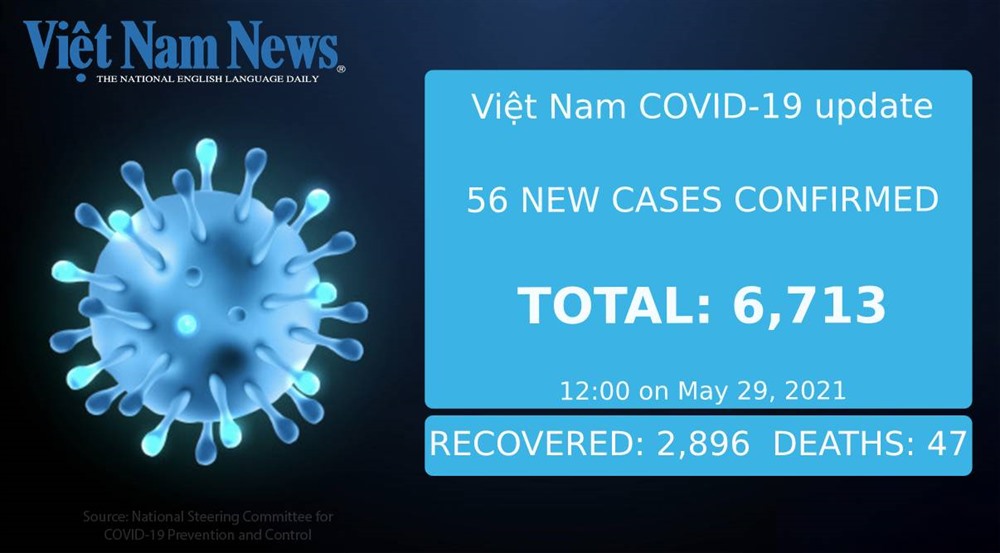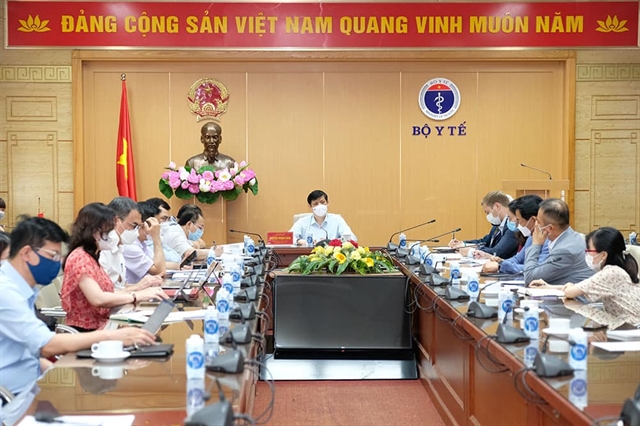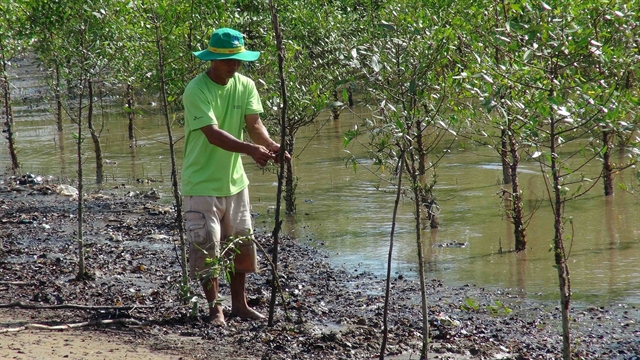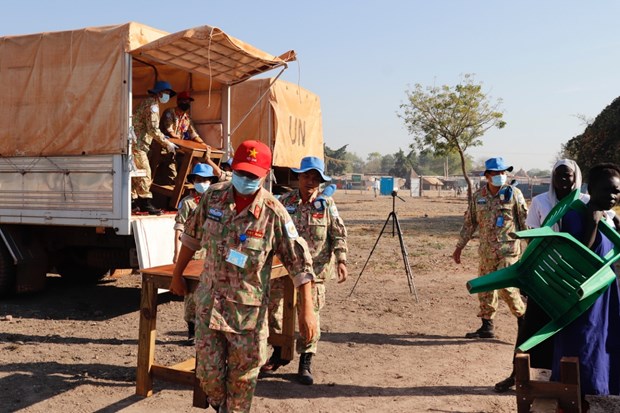
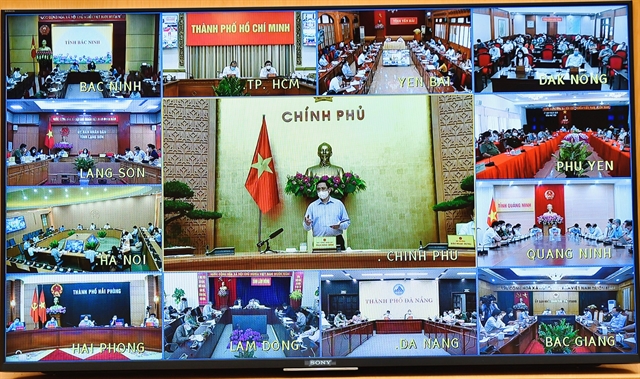
|
| Government leaders, representatives of relevant ministries and agencies, leaders of the provinces and centrally-run cities and those in districts/towns which are home to industrial, economic and processing zones across the country join the meeting on Saturday morning. Photo baochinhphu.vn |
HÀ NỘI — Prime Minister Phạm Minh Chính on Saturday morning presided over a national online conference on the COVID-19 situation and urgent response measures amid the complicated developments of the pandemic with an increasing number of infections recorded in industrial parks and major provinces and cities.
Attending the event were Government leaders, representatives of relevant ministries and agencies, leaders of the provinces and centrally-run cities and those in districts/towns which are home to industrial, economic and processing zones across the country.
A new coronavirus variant with characteristics from the existing Indian and UK variants had been detected in Việt Nam for the first time, the Ministry of Health Nguyễn Thành Long said at the online meeting.
Long said genetic sequencing on several COVID-19 patients in Việt Nam revealed the presence of two common coronavirus variants from the UK and India.
The UK variant is believed to be more transmissible than ordinary strains, while the Indian variant is both more transmissible and potentially less susceptible to neutralising antibodies of the immune system.
However, the new coronavirus variant which has recently been detected in Việt Nam has characteristics from both the UK and the Indian variants. It is an Indian variant with mutations that originally belong to the UK variant, according to Long.
Việt Nam detected seven coronavirus variants including B.1.222, B.1.619, D614G and B.1.1.7 UK variant and B.1.351, A.23.1 and B.1.617.2 Indian variant.
Fourth wave
Reporting at the meeting, Minister of Health Nguyễn Thanh Long said that the fourth wave of COVID-19 in Việt Nam included infections in industrial zones, multiple sources of infections and the presence of various coronavirus variants.
The virus spread very fast, particularly in closed spaces without ventilation systems.
Many COVID-19 patients suffered from more and more serious symptoms, thus required more intensive medical care than those in previous waves.
Long said that Bắc Giang could not control COVID-19 in a short time as its industrial parks had high density of workers, in confined factories, sharing toilets and canteens, travelling on the same coaches and usually renting houses in the same residential areas.
“Bắc Giang and Bắc Ninh will continue reporting new cases as pathogens have been circulating widely and for a long time,” Long said, adding that the two provinces were gradually bringing the outbreaks under control.
Bắc Giang Province prepared plans to deal with up to 5,000 cases while Bắc Ninh Province prepared to deal with up to 3,000 cases.
Other localities, particularly major cities of Hà Nội and HCM City, would continue seeing new cases from clusters but they have done a good job in controlling the disease.
Long said it was crucial to protect industrial parks from COVID-19 to secure production.
“We identified that the highest risks remain at industrial parks and once outbreaks occurred there, it will spread very fast and it will be very difficult to control,” Long said, adding that the ministry developed scenarios responding to the outbreaks at industrial zones.
Every factory and industrial park was required to have response plans including adjusting production, managing workers when they leave factories and travel to their accommodations.
Employers and business owners must pay more attention to disease prevention and control as well as vaccine access for workers in industrial zones.
Long said that social distancing was an important measure for disease prevention and control.
Localities were proactive in locking down high-risk areas but minimising affected areas to avoid negative impacts on production and people’s daily life.
Secretary of Bắc Giang Province Party Committee Dương Văn Thái said that the province conducted 750,000 tests, arranged 282 quarantined areas which could deal with 24,000 people.
Until now, 174 quarantined areas were in use, while 108 were available for 9,000 people. The province planned to open another quarantine area with 6,000 beds.
Local authorities instructed enterprises to meet safety and disease prevention and control requirements when they resumed production, Thái said.
On May 27, the province received 30,000 vaccine doses which would be for those working on the front line and workers, particularly whose factories were set to re-open, he said.
The province was ramping up testing in residential areas, he said, adding that they were determined to curb infections and would assist enterprises to resume operation as soon as possible.
Secretary of Bắc Ninh Province Party’s Committee Đào Hồng Lan said that the province prepared quarantines areas for about 20,000 people and five field hospitals with a capacity of 300-500 beds each.
It also increased testing capacity, using pooled sample testing to deal with from 30,000 samples a day to 40,000-50,000 a day.
Quick tests would be offered to people who visit medical units, markets and residential areas, Lan said.
“Bắc Ninh would maintain production along with disease prevention and control,” she said.
Comparing the pandemic to an enemy, Prime Minister Phạm Minh Chính called on the Government, ministries, agencies, localities and people to take drastic and comprehensive measures to better respond to the development of the disease.
He asked relevant agencies to make joint efforts to secure more COVID-19 vaccines for Việt Nam. Besides domestically-made vaccines, Chính asked ministries of Foreign Affairs, Public Security and Defence to search for and buy vaccine production technologies.
Relevant agencies would launch communication campaigns about vaccinations for prioritised groups, localities and people.
“Ministries and agencies must support localities to solve difficulties in disease prevention and control so that no locality faces shortages of funding, human resources, medical materials and equipment for disease prevention and control activities,” he said.
Prime Minister Chính asked the labour ministry to provide support for enterprises, workers and people in disease-hit areas.
“I call on people, enterprises, agencies and organisations to join the fight against COVID-19 with ideas, funding, consultations and even networking to help us access COVID-19 vaccine supply and technological transfer for vaccine production,” Chính said.
Vaccinations
Health Minister Long said that Việt Nam was expected to achieve herd immunity this year.
The country is speeding up the development and production of local COVID-19 vaccines, one of which is in the 3rd phase of trials.
Meanwhile, Việt Nam is also actively negotiating with and searching for COVID-19 vaccine suppliers around the world, Long said, adding that the health ministry signed contracts and got commitments for more than 100 million vaccine doses which can cover 70 per cent of Việt Nam’s population aged over 18.
The ministry was also making efforts to buy an additional 40 million does.
As soon as shipments of vaccines arrive in Việt Nam, people in the two biggest hot spots – Bắc Ninh and Bắc Giang – would be given priority to get vaccinated.
Updated numbers
On Saturday morning, the Health Ministry confirmed 87 new locally-transmitted COVID-19 cases, of them, 57 were reported in Bắc Giang, 27 in Bắc Ninh, one in Bạc Liêu, one in Gia Lai, and one in Hà Nội’s Cancer Hospital K.
At noon, the ministry confirmed 56 new cases including seven imported and 49 locally transmitted cases.
Of the new community cases, 46 are in quarantined or locked down areas in Bắc Giang Province and linked to SARS-CoV-2 positive workers of local industrial parks.
Tây Ninh Province in the south, Điện Biên province in the northern and Đông Anh branch of National Hospital of Tropical Disease each reported one new case at noon. Particularly, the case in Tây Ninh is a 2-year-old boy who had close contact with a confirmed COVID-19 case relating to the Christian church cluster in HCM City. The latest case in Điện Biên is a 6-year-old girl in Nậm Pồ District.
By Saturday noon, Việt Nam has reported 5,213 locally-transmitted cases and 1,500 imported ones. The number of cases reported from April 27 was 3,643, of which, 1,927 cases were reported in Bắc Giang Province and 736 cases in Bắc Ninh Province. VNS

